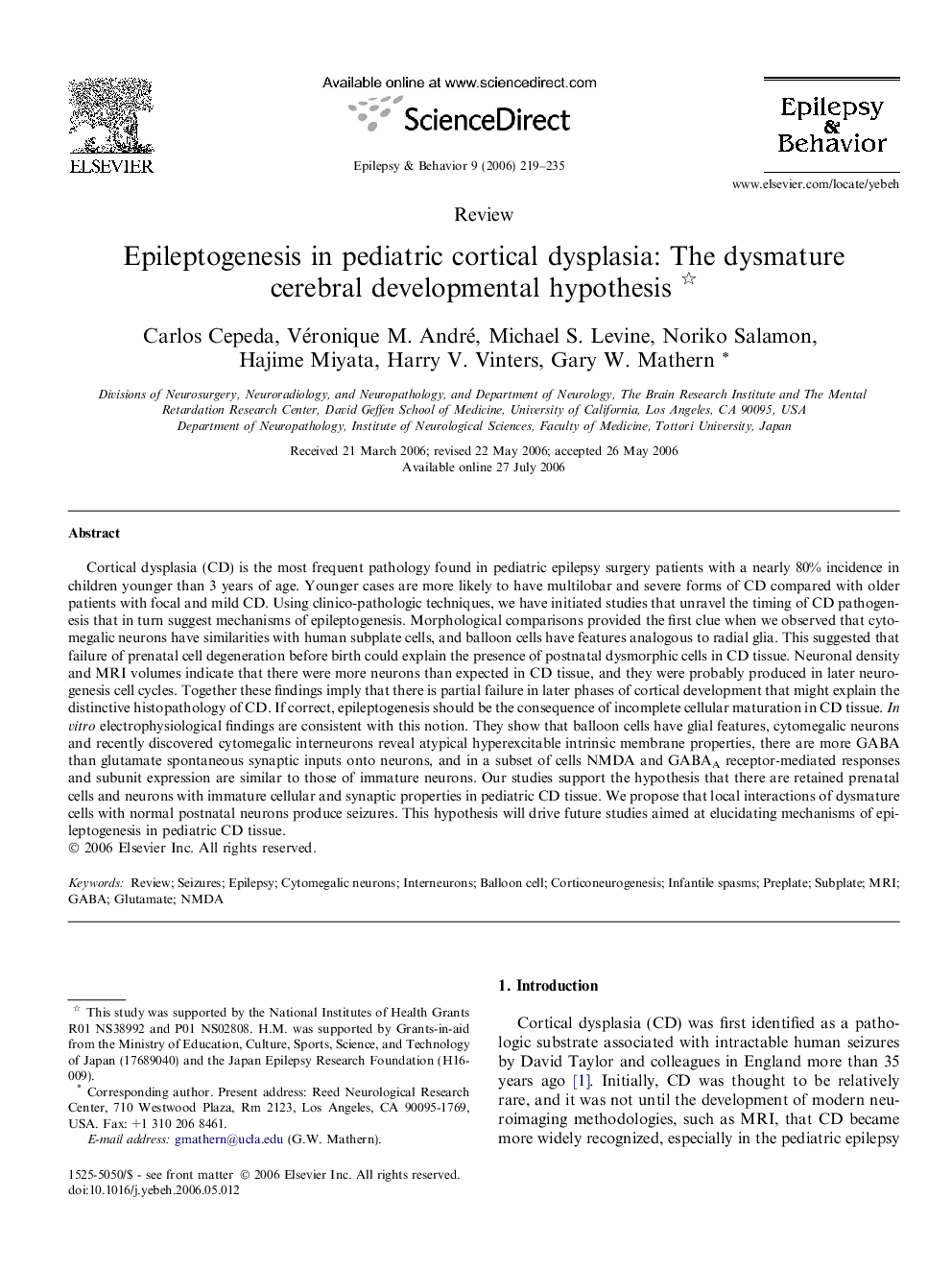| Article ID | Journal | Published Year | Pages | File Type |
|---|---|---|---|---|
| 3051435 | Epilepsy & Behavior | 2006 | 17 Pages |
Cortical dysplasia (CD) is the most frequent pathology found in pediatric epilepsy surgery patients with a nearly 80% incidence in children younger than 3 years of age. Younger cases are more likely to have multilobar and severe forms of CD compared with older patients with focal and mild CD. Using clinico-pathologic techniques, we have initiated studies that unravel the timing of CD pathogenesis that in turn suggest mechanisms of epileptogenesis. Morphological comparisons provided the first clue when we observed that cytomegalic neurons have similarities with human subplate cells, and balloon cells have features analogous to radial glia. This suggested that failure of prenatal cell degeneration before birth could explain the presence of postnatal dysmorphic cells in CD tissue. Neuronal density and MRI volumes indicate that there were more neurons than expected in CD tissue, and they were probably produced in later neurogenesis cell cycles. Together these findings imply that there is partial failure in later phases of cortical development that might explain the distinctive histopathology of CD. If correct, epileptogenesis should be the consequence of incomplete cellular maturation in CD tissue. In vitro electrophysiological findings are consistent with this notion. They show that balloon cells have glial features, cytomegalic neurons and recently discovered cytomegalic interneurons reveal atypical hyperexcitable intrinsic membrane properties, there are more GABA than glutamate spontaneous synaptic inputs onto neurons, and in a subset of cells NMDA and GABAA receptor-mediated responses and subunit expression are similar to those of immature neurons. Our studies support the hypothesis that there are retained prenatal cells and neurons with immature cellular and synaptic properties in pediatric CD tissue. We propose that local interactions of dysmature cells with normal postnatal neurons produce seizures. This hypothesis will drive future studies aimed at elucidating mechanisms of epileptogenesis in pediatric CD tissue.
